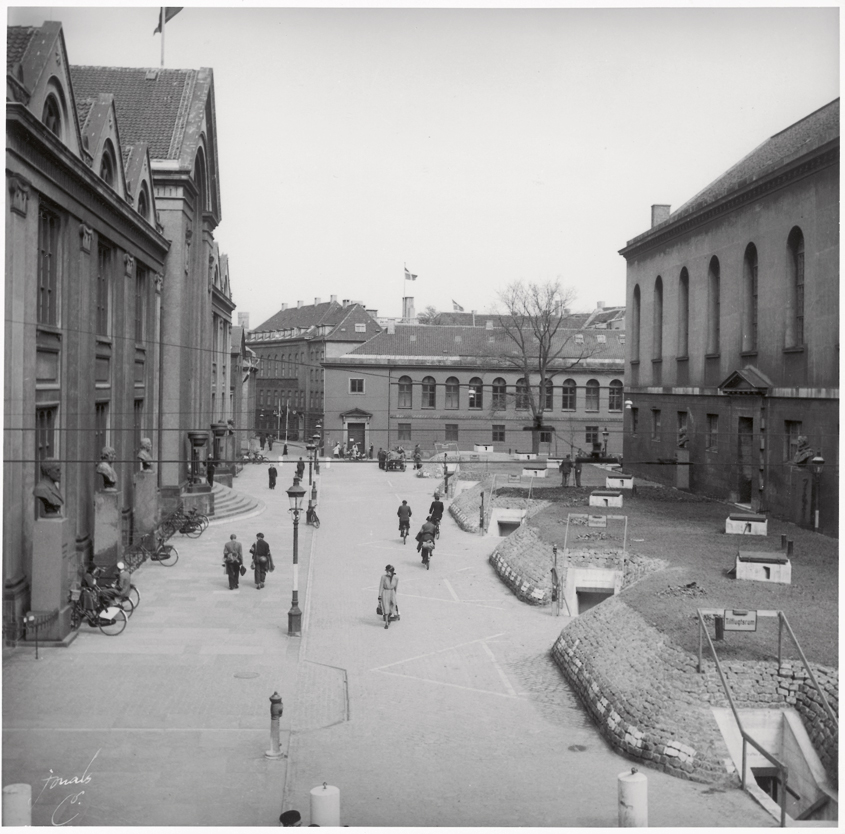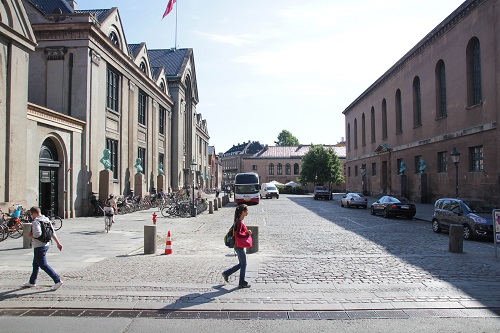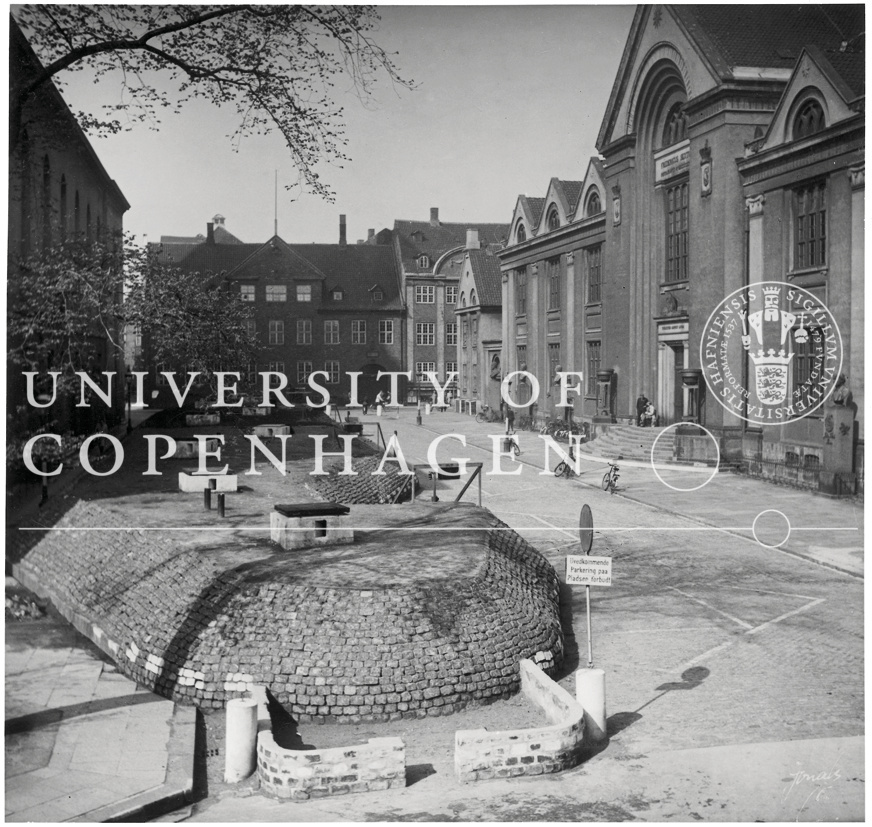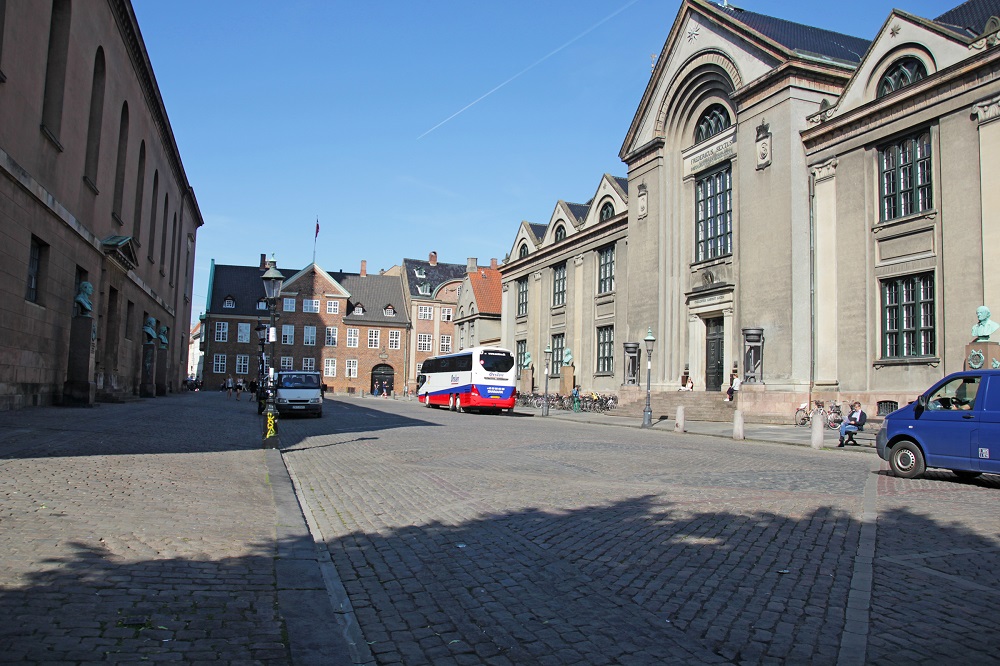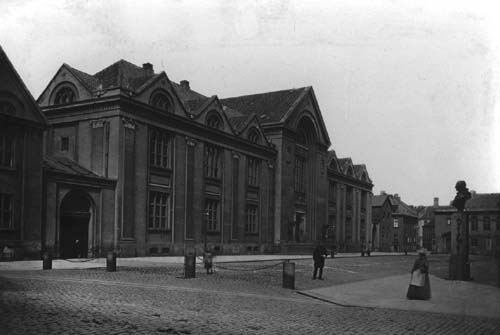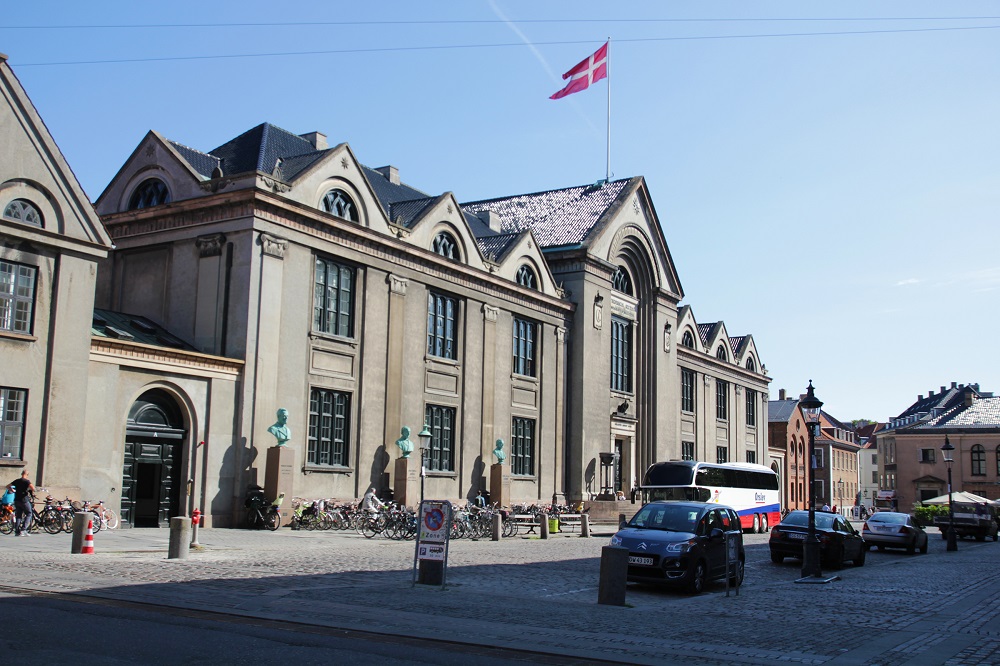Universitetsavisen
Nørregade 10
1165 København K
Tlf: 35 32 28 98 (mon-thurs)
E-mail: uni-avis@adm.ku.dk
—
Campus
During World War II, bunkers were constructed on Frue Plads to provide shelter from air attack
[This article has been updated after being originally published in 2016]
The 1940s were a very different time for the University of Copenhagen (UCPH).
Air raid shelters that covered the square during World War II. They were removed shortly after the war, giving way to the more open cobble stones that exist today. Our photographer captured Frue Plads in the center of Copenhagen as it looks today from the same angle as the historical photos.
Between 1940 and 1945, Germany occupied Denmark but allowed the Danish democratic government to maintain power. By 1943, however, many Danes had gotten involved in underground resistance activities that involved spying, sabotage, and other anti-German military intelligence operations. This allowed Allied governments subsequently to recognize Denmark as an ally.
More than 850 members of the resistance were killed during the war, and 900 Danish civilians were killed in a variety of ways: either by being caught in air raids, killed during civil disturbances, or in reprisal killings. Right after the German capitulation, thousands of German refugees died in Denmark, many children under the age of five, as a result of lack of Danish medical care.
Copenhagen became the centre of Danish resistance in June 1944, following a German declared state of emergency, when the entire city of Copenhagen went on strike. Germany flooded the city with troops, cut off water and electricity, and established a blockade.
Many Danish civilians were involved in smuggling Jews into Sweden via fishing vessels, one of which was called Elisabeth K571 and now rests in the Dragør Museum in Amager.
